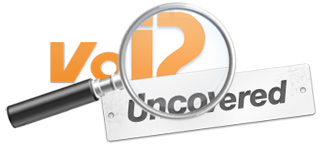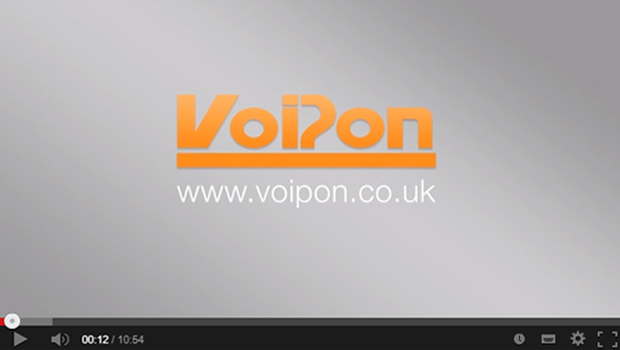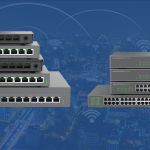Recently, Sangoma has announced the release of NetBorder Express 4.0, their innovative gateway application and we had the pleasure of interviewing Frederic Dickey, Sangoma’s director of product management and the company’s new Director of Marketing, Jeff Dworkin.
For those of you who aren’t familiar with Sangoma, since 1984, the company has been a premium provider of hardware and software building blocks for telecom and data application developers and integrators.
Below is a summary of our call.
[VoIPon] 1. So Jeff, you’re the new Marketing Director for Sangoma. I know a little bit about your background and I think this is a fantastic coup for Sangoma. Why don’t you share some of your background with VoIPon’s listeners and what this experience will mean for Sangoma’s channel?
[Jeff Dworkin, Director of Marketing, Sangoma] Thanks Kathleen. Yeah, I’ve been part of the voice industry for well over 20 years. Background as a developer, both in the enterprise and the carrier space; spent some time with Dialogic in the infrastructure hardware space, as well. I’m really looking forward to bringing this deep industry knowledge to Sangoma, as a way to build up the company, and specifically from a marketing standpoint, is through better channel development and a better partner program. To move the focus of what we’re doing onto the partners and onto the partners and onto their successes.
We have a new format for our case studies. That’s going to be posted very shortly. It may even be posted by the time this podcast broadcasts.
So, again the focus is off of what Sangoma has done and back onto the problem that was solved for the user customer, by our developers and channel resources. So, I’m really looking forward to that, again, creating a real dialogue between the channel and Sangoma.
In the past a lot of what we had done was a lot of more sort of information flow from Sangoma out to the partners. Now through better use of social media tools, blogging, facebook and twitter, really trying to establish a back channel that allows our developers and our customers to tell us, what are we doing right; what are we doing wrong; and what are the products you need; what are the features you need and again create that dialogue between the company and the ecosystem of people who are using, building, developing and selling our products for everyone’s mutual success.
And that will also benefit those customers who have a shrink wrap ready or near shrink wrap ready that they want to move out to the public. Our distributors will now have better exposure to that group of people. It may be our distributor or those people who are strictly on the selling side of things will spot a product and be able to help a developer bring it to market.
So all good things, all about building eco system or market place where we can make things happen. As opposed to here’s our product, here’s the information about our product, now go sell. That’s not how we really want to do it in the future—whole new partner program, whole new developer program, all rolling out within the next month or two.
[VoIPon] 2. Recently Sangoma has released the Netborder 4.0, which appears to be game changing for Sangoma. It will bring the affordability of Sangoma’s products to a much wider audience. With this release is support for MFC/R2, BRI which has been long awaited. Now that NetBorder 4.0 is here, how has the market reacted? Are there any interesting new implementations you can summarize?
[Frederic Dickey, Director of Product Management, Sangoma] Well, ok, thanks for this. Um, I have to say that the response has been fantastic. We’ve done this release in conjunction with the ITExpo show in Miami, just in early February, but maybe before I go into the effect, I just wanted to say from my point of view, we’ve always felt that NetBorder was in some ways a game changing way of delivering gateways, just because, from its inception it’s been a voice over IP gateway that has always been delivered as software, which is very different than what has been traditionally been offered on the market. And that being software you know it introduces a much greater way of integrating with telecom applications that are also software, nowadays. I guess the main effect the response, is that by adding these features, like BRI and R2, as well as other ones like T38, we now take our game with Netborder express to a more global playground. Before that, we’ve been kind of covering the North American market, which is not a bad market to cover, but it is not a global market.
Now with this feature set it allows us to work with our partners and devise strategies that are truly global. We are working on a few OEM partnerships, that we can’t really name, but these are really large OEMs and are taking their game globally. We are also reaching a point where the feature maturity, or the breadth of features we have with this product, we now in a position to displace other solutions, and this is really something we couldn’t do before. And this is really what the effect has been since we released 4.0.
So in terms of the second part of your question, which is new implementations. It’s pretty much the same message as before, a gateway that you can integrate with your IP PBX, now we’re just helping you take this around the world.
[VoIPon] 3. Does MFC R2 and BRI support now extend across the other telephony cards as well or is this only done in NetBorder gateways?
[FD] So in short, the effect of these features goes across the board for Sangoma. The reason is that if you look at the more traditional side of Sangoma, to contribute to the open source arena, we have for instance substantially increased our contribution to projects like FreeSWITCH. Under what is labelled FreeTDM. So for instance, if you take FreeSWITCH, and you need a TDM or a traditional telephony interconnect, you use FreeTDM and that interconnects all of our cards. On top of doing the interconnection on top of our cards, it also requires all kinds of underlying telecom protocols, like R2, like ISDN BRI, like ISDN PRI, and it’s pretty much what you also need in a product like NetBorder Express to evolve it and cover a more, a wider geography. So in effect, you know, that’s what’s happening these days, is that projects, whether it’s NetBorder Express, whether it’s FreeTDM, whether it’s our way of augmenting other projects like Asterisk, there is a common level, I would say of engineering work that has ripple effects on multiple products. So yes, this kind of work, adding BRI, adding R2, is something that you will see not just for NetBorder Express, but on the same token on other products like FreeTDM for instance.
[VoIPon] 4. So in short, why choose the NetBorder Express Gateway?
[FD] Like I said, NetBorder Express is a piece of software. It’s very different than the way you buy a traditional voice over ip gateway. So with software you get the flexibility you get with software. You’re not stuck with a piece of metal or a piece of equipment that you have to eventually change or junk or whatever. So you have this kind of flexibility. It also goes along the same lines as the way the industry is going. When you look at telecom solutions these days it’s all software. Twenty years ago, when I started my career, if I start wearing the same ideas as before, like Jeff was saying back in ‘89, any telecom solution was built on really very specific hardware. Now being software it provides much better integration with these applications. It has also reached, like I said, a feature richness that our customers, our partners our distributors can take around the world. And also it leverages all the attributes of Sangoma’s hardware in the industry. We’ve always been renowned for very high quality hardware and this is still leveraged within NetBorder Express. So for all these reasons, being software, providing a very good level of integration with other applications, the feature richness and depth of NetBorder Express, as well as finally leveraging our award-winning telephony hardware.
[VoIPon] 5. So what’s next for Sangoma?
[JD] There are a tremendous amount of things going at Sangoma. For those who are aware, there is a new CEO, new CFO, I’m there as the new Director of Marketing. We have sort of a new mandate from the new CEO in order to change a little bit of the way Sangoma has been doing business. We’ve always been known, as Frederic mentioned for just the highest quality hardware within our particular market space.
However, the idea is now to evolve the company a little bit beyond just high quality hardware. NetBorder Express is a great example of that. It is a product that has really matured; it is a software based product. And we have other products that are similar to that. They may leverage the Sangoma hardware but they are really software products in the pipeline that we are currently working on.
Beyond the product level, we are really trying to establish Sangoma, as more of an eco system where business can be conducted. There has always been a feeling that Sangoma was a company that some people stumbled upon in their searches when they were having problems with other products that Sangoma acts as a replacement for.
In this new model, we really want all of those pathways to be much more centre to markets that we play in. Be they particular verticals or horizontals. So that our distributors, our resellers, our application partners, the developers, the systems integrators, they all can find us more easily, and we can create a much better dialogue with those people who use our products as part of our solutions.
Again, it’s always been sort of a one way direction of information would flow out of Sangoma and people would find this stuff on the internet.
Now the idea is through the use of social media and some better techniques and a redesign of our website, to start allowing the feedback to come back to the company so we stay ahead of the curve on new products and new feature development. Plus it also allows our partners to find each other. We are particularly interested in helping developers, application developers specifically, who may have nearly a shrink wrap ready product, to find a distributor or reseller to bring that product to a more broad market.
So it really is a much more integrated solution from a marketing stand point to allow everyone to find everyone else and also to leverage everyone’s skills to our mutual success.
It’s a pretty big job that’s ahead of us. And we really hope to have a new feel to the company. I don’t want to say a relaunch, but a new way of doing business that we hope to have ready for the market over the next quarter or so.








